We’ve all worked from our homes a lot more over the last 12 months than we might’ve been expecting. In fact, data shows that 62% of Americans worked remotely at one time or another during the last 12 months.
But what does the latest research say about whether working remotely is actually good for us or our businesses?
In this article, we’ll explore recent studies tracking how we’ve responded to working remotely, and we’ll cover some strategies for managing remote work — whether by choice or design.
Plus, we’ll show you how software can make transitioning to working remotely a lot smoother.
Let’s get started.
What does the science tell us?
The Covid-19 pandemic has seen the number of Americans working from home (WFH) grow from 7% to 62%. Of course, for most of us, transitioning to home-working was not a choice but an obligation.
Our employers needed us to pivot, to adapt rapidly to dramatic changes in how and where we work. The speed of the transition was significant, and this context needs to be considered as we delve into the latest research about how we’re all managing.
Let’s look at how 4 key factors have been affected by the rapid shift to remote working.
Productivity
Nearly a third of employees found that their pace of work had slowed while working remotely.
This is unsurprising given that many of us were also juggling caring responsibilities, home-schooling, and worries about our health and finances.
So what else do we know about how employee productivity is affected by remote working, outside of our current context?
Generally, employees that are enabled to work how and when it best suits them are more productive. They can plan their workday for the hours they are most alert and create a work environment that best fires their creativity and maintains their focus.
Research shows that when employees are supported to work in a flexible way, they’re 86% more productive.
Of course, not everyone works best in a remote environment. In fact, 41% of Americans working from home during Covid-19 were looking forward to returning to the office.

And, of course, there are business needs to be considered. You’re not going to be productive running a factory with a remote workforce that’s working from the local park or coffee shop.
It seems logical to conclude that productivity is maximized when both the business and employee needs are met in the most flexible way possible — whether that’s working remotely or otherwise.Productivity is intrinsically linked to collaboration.
Teams that are clear on individual responsibilities, pool resources to solve tasks, and communicate effectively deliver higher performance at speed.
50% of those people struggling to remain productive at home were also finding collaboration more challenging.
So, let’s check in on how working remotely has affected our ability to collaborate well.
Collaboration
Proximity and informal communication methods work really well within an office environment. It’s far easier to check in on how your team or colleagues are doing, quickly solve issues, and share new or changing information.
For teams whose only method of collaborating is informal and ad hoc, the transition to remote working may be more challenging.
Those who already have a more structured way to how they work together, with clear processes and planned check-points, will probably find the change easier to adopt.
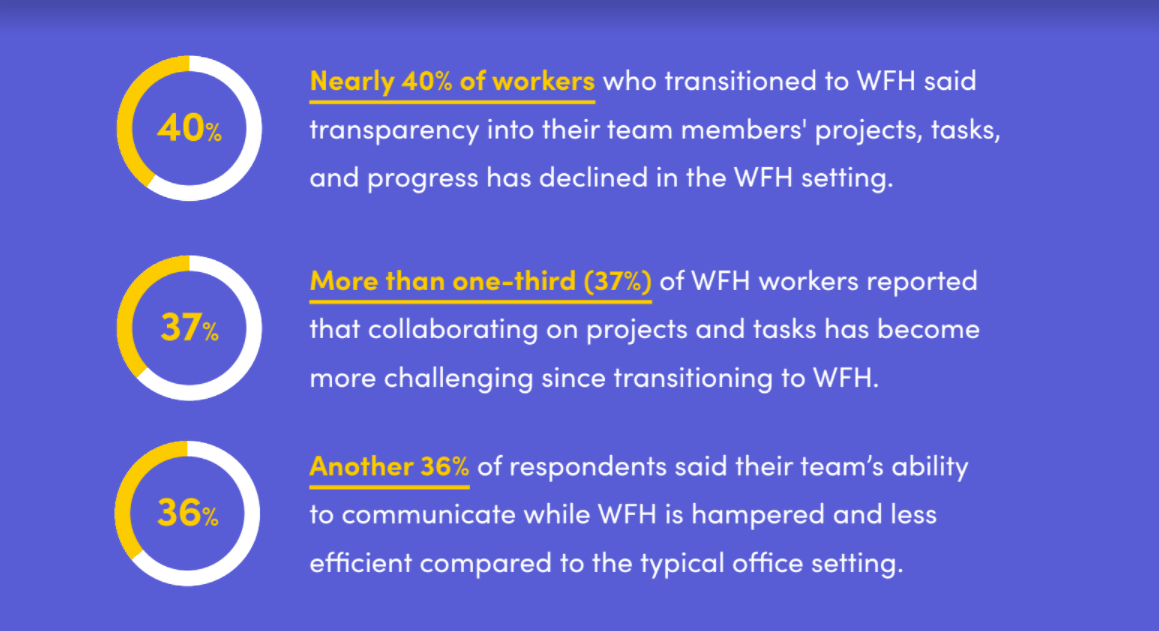
Poor collaboration doesn’t just impact productivity and efficiency. Staying connected with colleagues is also important for our mental health.
In a recent survey, 54% of respondents worried about their mental and social health during the Covid-19 pandemic — more than about their physical health.
And pre-Covid-19 studies suggest it’s not just something to be concerned about during a global pandemic.
A study from 2019 identified that 21% of remote workers named “loneliness” as their biggest challenge when working outside of a traditional workplace environment.
Engagement
In 2019, 35% of American workers classed themselves as engaged in their work.
Businesses had been investing significantly in employee engagement strategies and — while still relatively low — 35% engagement was the highest level recorded in history.
Many of those approaches — including compensation and recognition strategies — were difficult to maintain during the pandemic, which negatively affected engagement levels in a significant way.
In fact, 29% of employees said they felt less engaged since they moved to working from home.
Maintaining employee engagement is crucial for businesses. Engaged employees are harder-working, more productive, more loyal, and easier to manage.
Plus, during times of significant change, they are also more resilient and adaptable.
Over half of employees who felt equally or more engaged while working from home last year found it easy to maintain their work output.
Accountability
It can be more challenging to maintain a level of accountability in a distributed team. When a team is co-located, it’s much easier to monitor the effort everyone is giving to the task at hand.

It’s also simple to track progress and the quality of outputs. Plus, if someone’s struggling, it’s easier to spot it earlier and offer support.
While some would suggest that accountability is synonymous with micro-managing, holding people accountable for their work can help build a sense of motivation and ownership.
This contributes to higher levels of engagement, increased productivity, and higher overall performance.
What strategies are available to maximize working remotely?
The strategies you use to stay productive as a remote worker may depend on whether you’re remote working by choice or circumstance.
A person who would prefer to WFH may be disappointed at the lack of remote work opportunities. While people who enjoyed the office environment may find the continued requirement to work from home challenging.
If you don’t have a choice in how you work, you’ll first have to manage the frustration and logistical challenges that come with working in an environment that’s less than ideal.
Talking to your employer about your concerns and seeking options to manage your other commitments may help.
Assuming that you’ve made the decision to continue remote working after the choice to return to your normal place of work has been offered, here are our top strategies.
Establish a routine
The initial transition to working remotely had us scrambling just to survive — juggling lockdown, caring commitments, and work.
Without any sort of structure, it can be harder to switch into work mode. Which leaves you drifting aimlessly until lunchtime and then engaging in a flurry of panicked activity.
During the pandemic, our workdays were — on average — 49 minutes longer than we’d been used to previously. Which, in turn, reduced the opportunity for self-care activities, such as exercise, being with family, and sleep.
Now the dust has settled, building a regular routine that balances work requirements with daily life is important.
One of the benefits of remote working is increased flexibility, so create a routine that suits how you work and when you feel most productive.
Claim a workspace
If you’re going to be working remotely long-term, it’s important to dedicate a space to work.
Whether that’s at home, in a shared drop-in workspace, or putting down roots at your local coffee house, creating a regular place to work is crucial for productivity.
At home, you can set up an environment that helps you focus. For some, that might be a calm, clear desk that’s well-organized and zen-like. If that’s you, choose a space where you can minimize distractions and use drawers and folders to keep things neat.
For others, a more cluttered space may spark creativity and innovation. If you like to be surrounded by post-its full of ideas for things you’re working on, choose a space that doesn’t need clearing down at the end of the day.
Train your brain
It’s a fact of life that on some days, work feels effortless and on others, well, not so much.
Without the camaraderie of the work environment and with fewer opportunities to grab a colleague for a coffee and bounce ideas around, it can be hard to get motivated. 22% of British employees working remotely during the pandemic missed the motivation they got from the office buzz.
However, it is possible to train your brain to switch into work mode.
Using a “trigger” can help your brain recognize that it’s time to knuckle down and get stuff done. Which is especially useful on days when just getting started feels impossible.
You can use anything you like as a trigger. If a hot drink helps you focus, treat yourself to a new mug that’s just for work. Seeing that as you brew your morning tea or coffee helps signal that it’s time for work.
Music can also be very effective for people who enjoy working with something in the background.
Build connection from afar
It can be tricky to feel connected to your wider team if you’re working remotely. In fact, 40% of employees said they missed their colleagues while working from home during the pandemic.
Or maybe you’re a freelancer or a small-business owner who’s in a team of one. So how do we create a connection if we’re missing it?
Building strong bonds with your teammates isn’t impossible as a remote employee. After all, you’ve already got your work in common.

Make it a priority to find out what makes your colleagues tick. If you share interests, that can be a great way to build a social connection. And you can learn a lot from people whose thoughts are different from your own.
Check in on each other informally, and make sure to flag if you’re struggling. Sharing — and solving — problems together can be a positive bonding experience.
If you work alone, make time for hobbies and social experiences outside of work, so that you don’t lose the opportunity for human connection.
Monitor and review
2020 was a year of unprecedented experimentation. We all had to manage things we’d never contemplated before.
Spend some time reflecting on what worked and what didn’t so you know what you want to keep moving forward, and what you’ll let go of.
If you’re going to continue working remotely because you’ve enjoyed the greater flexibility or reduced commute, remember that nothing is set in stone.
If others begin to return to the office and you feel you’re missing out, review your options. Maybe you could work remotely part-time and head back to the office for part of the week.
Or maybe you can find other work patterns to give you the flexibility you crave, such as compressed working hours.
Keep reviewing what’s working for you, and stay open to trying new things. Technology to support remote working is progressing in leaps and bounds, so perhaps adopting a new tool could help you adapt.
Zoom became the poster child of 2020, but there are many other digital solutions that can support effective remote working.
Let’s look in more detail.
How can software support effective remote working?
We’re obviously biased, but we think the monday.com Work OS has all you need to help you work well from pretty much anywhere.
The monday.com Work OS is a fully customizable, digital workspace that helps you build the workflows you need to get things done in the way you want.
It’s easy to set up, with over 200 templates to get you started quickly.
Productivity
We know that productivity can suffer when working from home. Software that enables greater transparency and organization and that supports greater collaboration can significantly improve productivity.
monday.com has everything you need to plan and stay organized. Plus, with a shared platform, your whole team can see who’s working on what, when tasks are due, and if things are stuck.
So, it’s easier to catch problems earlier and work together to solve them — also boosting collaboration and engagement.
And because everything about monday.com is customizable, you can view data in a way that suits you. We have 8 different views — including Gantt, timeline, and Kanban.
Collaboration
The monday.com Work OS makes collaboration simple. In fact, 69% of monday.com users didn’t find collaborating while working remotely to be any different from their regular workplace.
It’s easy to share, view, and annotate work, @tag your colleagues for their input, and exchange information and ideas.
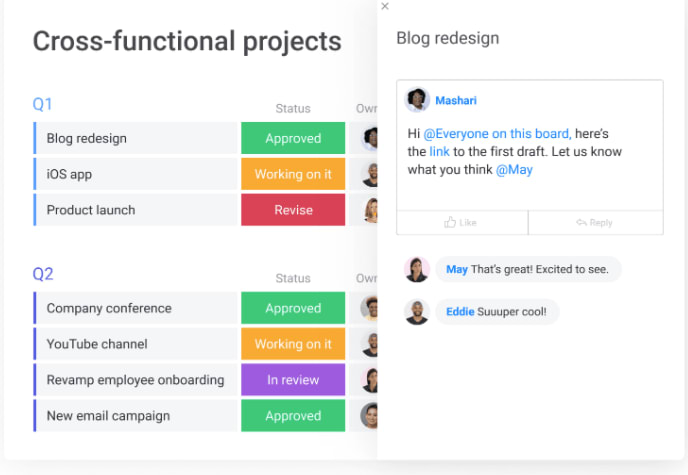
This is pretty important, given 40% of remote workers find knowledge sharing more difficult.
A recent survey showed nearly 50% of us found communication less efficient during the pandemic, but monday.com users were significantly less affected.
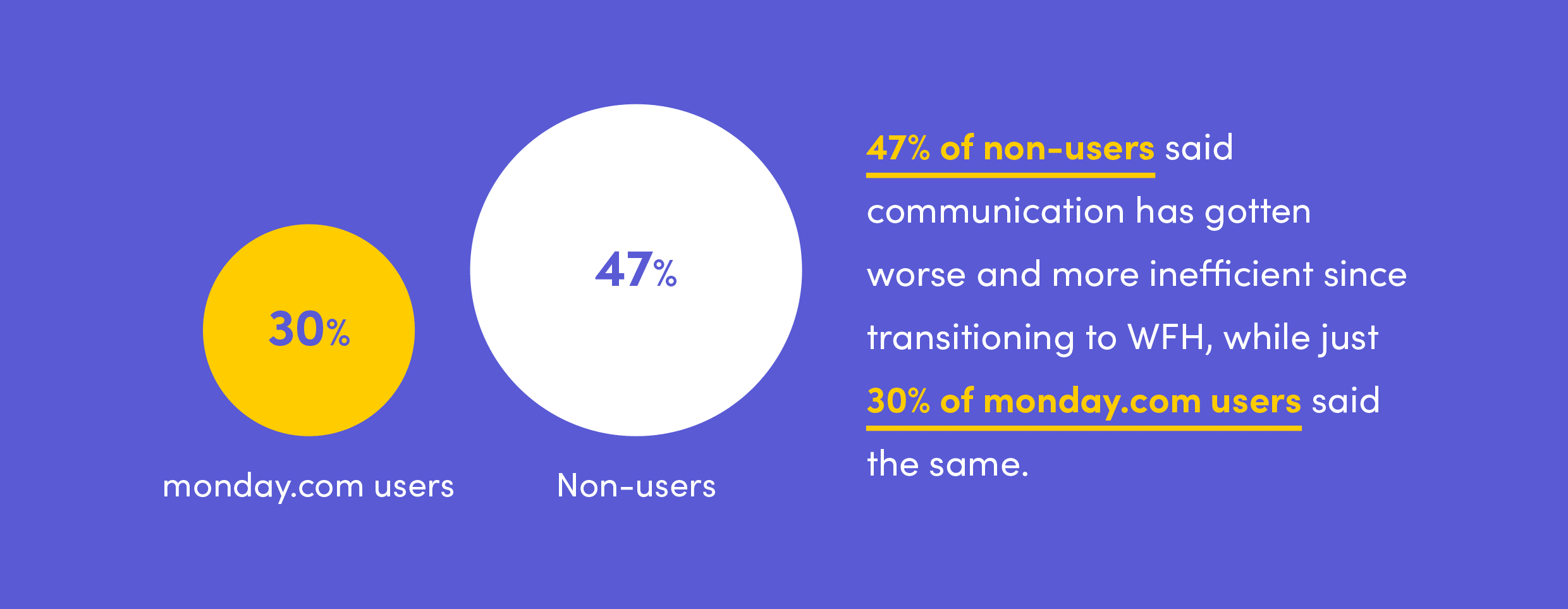
Effective communication underpins good collaboration and, over here at monday.com, we make it simple. You can communicate in-platform or integrate with your favorite communication tool.
So if Zoom’s still your go-to guy, we’ve got it covered.
Engagement
Employees are most engaged when they’re doing meaningful work. It’s hard to stay motivated and engaged if you don’t understand how your contribution makes a difference.
As a manager, a key strategy is to remove as much repetitive or administrative work as you can from your team, and let them focus on work that adds value and feels interesting.
monday.com eases the burden of routine work through its powerful automations. Just plug in the trigger and action to the platform and turn your attention to something more thought-provoking.
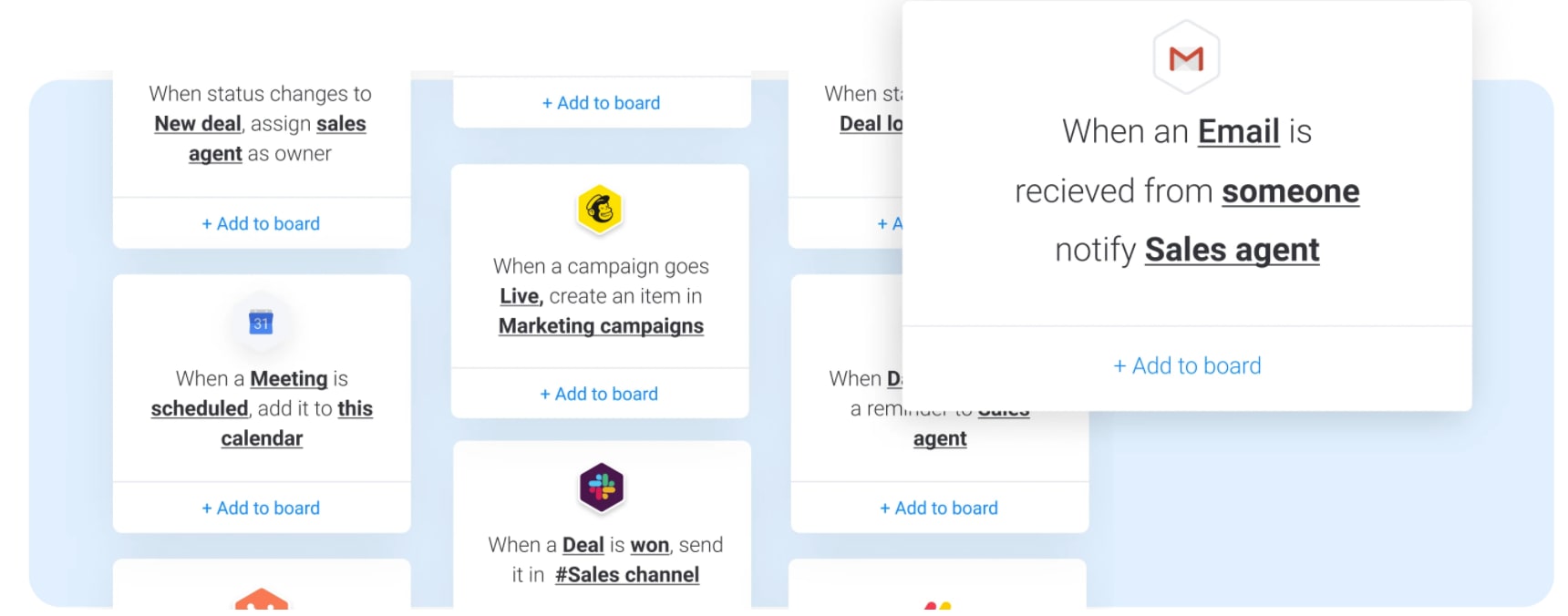
Plus, with clear visibility of who’s working on what and how things are progressing, it’s easier to see how your work fits into the puzzle.
Our colorful, data-driven dashboards update in real-time, so you’ll get a real sense of what your colleagues are up to, even if it’s from your dining room.
Accountability
Creating ownership for work increases accountability and helps drive higher performance.
Plus, fostering a bit of healthy competition between colleagues can be motivating, build camaraderie, and increase engagement.
With monday.com, it’s simple to assign responsibility for tasks and to track and monitor progress.
Everyone can quickly and easily see how work is progressing using status tags, and managers can keep an eye on the big picture with our reporting functionality.
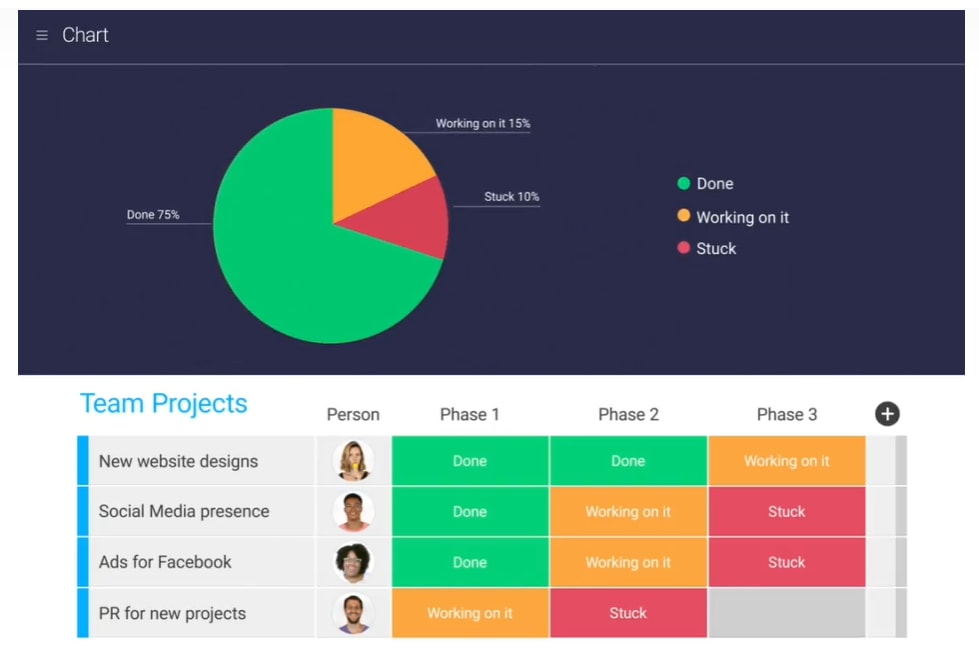
Choosing to work remotely can benefit you and your business
In this article, we discussed the latest research focused on remote working and its effect on workers and organizations.
Working remotely can offer significant benefits if it meets the needs of both employees and their businesses. However, working remotely can feel challenging for those for whom it’s not a choice.
If you’re enjoying working remotely, speak to your manager about the opportunity for continuing remote working as businesses begin to head back to offices.
Plus — whether you’re working remotely or planning to return to your office space — stay on top of everything you’ve got planned with our daily task tracker.
 Get started
Get started 
